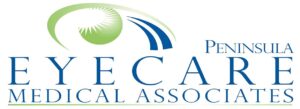A cataract is a clouding of the lens of the eye; cataract surgery is performed to improve vision by replacing the clouded lens with an artificial one. Cataracts affect millions of people in the United States each year. Most cataracts are the result of aging, though some form as a result of genetic factors, disease or injury. Cataract surgery is common, and considered safe and effective.
Reasons For Cataract Surgery
Cataracts can cause blurry vision, and increase the glare from lights. In their early stages, cataracts usually are not troublesome but, as they thicken, surgery to remove them may be required. Typically, surgery is indicated when cataracts interfere with everyday activities.
Candidates For Cataract Surgery
Cataracts caused by aging develop gradually, and patients may not notice the early vision changes they cause. It is only when their cataracts start interfering with vision that patients may become aware of them. An ophthalmologic examination will detect cataracts, and rule out other causes for vision issues, such as glaucoma or macular degeneration. Patients who become aware of visual difficulties related to cataracts usually experience, especially at night, clouded, blurred or dim vision.
Benefits Of Cataract Surgery
Cataract surgery's benefits are many, greatly enhancing the quality of life. They include the following:
- Improved quality of vision (sharper images, brighter colors)
- Less difficulty with routine tasks (particularly night driving)
- Decreased dependency on eyeglasses
Research indicates that the improved vision provided by cataract surgery reduces the risk of falls, making exercise, sports and hobbies safer. This, combined with the improved ability to read, recognize faces, and perform everyday activities with greater ease, results in improved physical health, increased sociability and longer life expectancy.
The Cataract Surgery Procedure
After the pupil is dilated, the eye is numbed with anesthesia, and a tiny incision is made to insert an ultrasonic probe. The probe emulsifies (breaks up) the cloudy lens into tiny pieces that are then suctioned out of the eye. Once the cloudy lens has been removed, an artificial lens is implanted.
The new lens, known as an intraocular lens (IOL), is often inserted through the original incision. Some varieties of IOLs serve multiple purposes, such as blocking ultraviolet light or working as bifocals.
Surgery is performed in an outpatient surgery setting, takes only 10 -20 minutes, and is relatively painless. Most patients demonstrate improved vision after the procedure.
Risks Of Cataract Surgery
Although cataract surgery is a common procedure and considered quite safe, any surgery poses risks. In the case of cataract surgery, there is a slightly increased risk of retinal detachment, a painless but dangerous condition. Other risks of cataract surgery include bleeding and infection. The risk of complications after cataract surgery is greater if the patient has another eye disease or serious medical condition. Potential signs of complications after cataract surgery include increased pain in or redness of the eye, light flashes or floaters, diminished vision, nausea, vomiting or intense coughing.
Recovery From Cataract Surgery
Immediately after surgery, a clear, protective shield is placed, which you will wear until your next day appointment. Vision may be blurry at first, but improves within a few days. Some itching and discomfort are also present for a few days, but it is important that a patient not rub or exert pressure on the treated eye. Heavy lifting should be avoided. Eye drops to prevent inflammation and infection are prescribed.
Daily activities can be resumed in a few days. Most patients need to wear eyeglasses, for at least some tasks, after surgery. If the other eye also has a cataract, which is usually the case, the second surgery is scheduled two weeks after the first.

